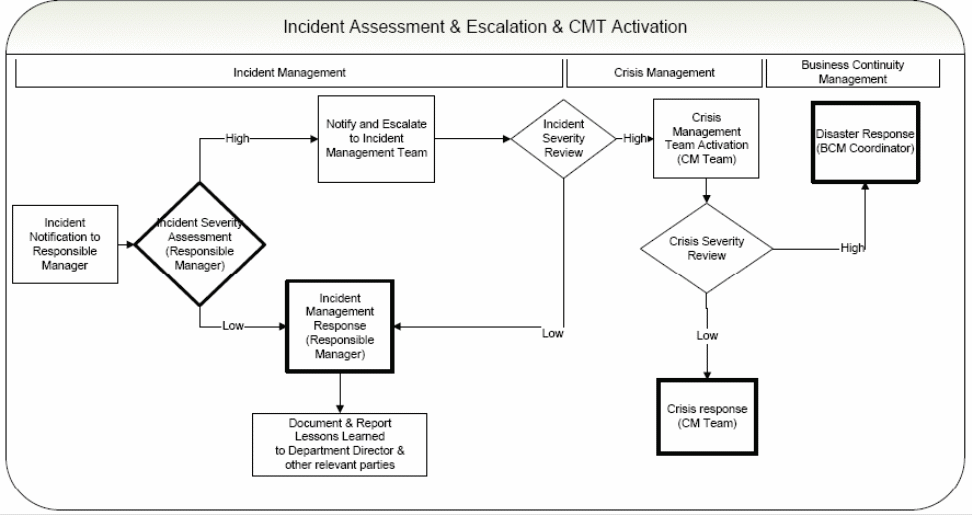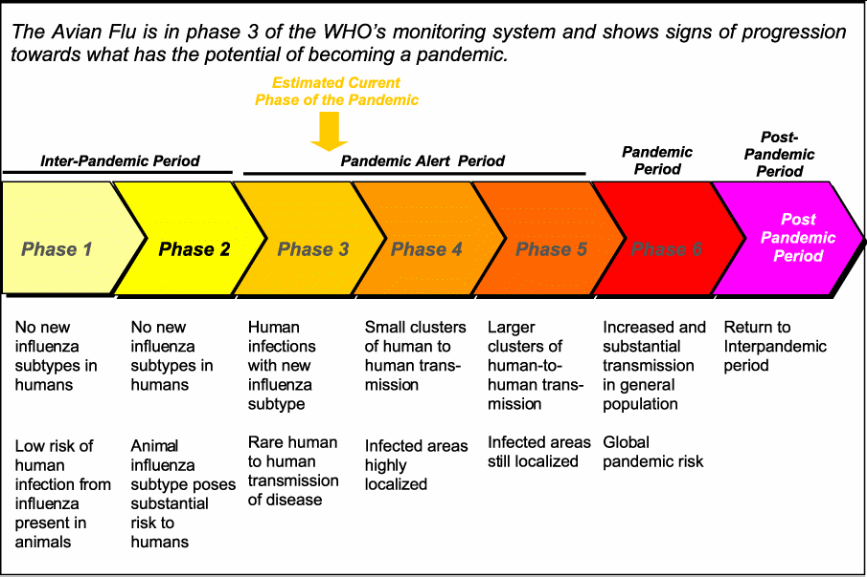Introduction
Crisis Management which was limited at the corporate level has now been extended to the National and International level, after the outburst of terrorist attacks in the US, UK, and India and also the spread of bird flu and other related epidemics throughout the world. The advancement in information technology has brought nations together and one nation alone cannot handle these disasters independently. Management experts have drawn up different plans of crisis management to meet this new environment. We will examine the general aspects of traditional crisis management and how Pandemic crisis management is different from traditional crisis management and also how each Pandemic is planned differently.
How does Crisis Management work in an organization?
Corporate level crisis, Site related crisis, Product related crisis, and People related crisis are the chief areas of concern for the Top Management. Corporate level crises include an attack on brand, attack on management, competitor allegation, and political interference. Site-related crisis includes industrial accidents, production and distribution problems, labor disputes, etc. Product-related crisis failure of product quality, accidental contamination. People related crisis includes a threat to an employee, accidents, corruption, etc.
Safety of the employees and transparent, fast communication are the guiding principles for any crisis management philosophy. There will be a crisis management team in any organization that will analyze the problem, select a suitable Task Force, nominate a coordinator, induct experts and chart out an action plan which is reviewed on an hourly basis. Usually, the CMT monitors the implementation by the Task Force. The CMT coordinator will be the first point of contact. The induction of experts and specialists will depend on the type of crisis. If the crisis is to be managed at the country level, CMT has to frame new strategies, choose the most appropriate course of action and provide instruction within the market. According to Protiviti, Independent Risk Consulting, the functions of CMT are illustrated below. (Vael, 2007).

The activities of CMT is distributed among the following key personnel:
- CMT Leader is ultimately responsible for all major decisions, agree on key messages, brief industry associates and empower and support CMT coordinators.
- CMT co- coordinator manages, collates, analyses, and segregates information that can be passed on to the public and which should not be passed on to the public.
- A CMT communication manager is responsible for promptness, accuracy, and consistency of communication and has a liaison with the other countries and within the country.
- CMT specialist and adviser support and advises on possible implications and will be responsible to get the updated data. According to the situation, different types of advisers and specialists will be inducted into the team.
How Pandemic crisis management is different?
Pandemic is an epidemic flu transmitted from birds to human beings and from human beings to human beings. During 2007 most parts of Asia and Europe were affected by Pandemic influenza. The mortality rate is as high as 50 %, the absenteeism in industry and trade called for a different strategy to cope with the situation. The parameters were not within the control of the organization and hence a normal CMT could not cope with the situation. Communications with different government departments and international agencies have to be carried out with speed and accuracy. Employees have to be warned against rumors and given proper counseling in health care. “Most websites (CDC, WHO, others) say that our greatest defense will be quarantined. The expectation is that geographical areas will be quarantined, perhaps repeatedly, and the eruptions of cases move from region to region and cycle back again. Quarantines will likely be enforced for between four and ten weeks. Students will be home and schools will be closed for a time that will probably not be known at the beginning of the quarantine.
We have nothing to go on to prepare in terms of past experience. If this once becomes human-to-human transmissible, it will move throughout the world remarkably fast because of our mobile lives and how air travel has become so commonplace.” (Avian bird flu Pandemic).
To minimize the impact of pandemic Teed consultancy has suggested a 20 point action plan:
- We should plan for a reduction of 50 % workforce for a period of 12 – 15 weeks.
- The employee should be relocated to places where the infection is minimum.
- The shop should be open for the minimum time possible.
- Staff shortage in the CMT should be planned.
- A pandemic operating regime should take off immediately when the pandemic strikes.
- When the government declares the outburst of the pandemic or when staff strength is reduced below a normal level, the operating regime should take off.
- Critical processes of the company should be sustained during the pandemic regime.
- Critical personnel required during the pandemic regime should be identified.
- Cross-training of the employee should be planned ahead.
- Staff, customers and other interested parties should be communicated company’s contingency plan during the pandemic outburst.
- The government’s guidelines on quarantine, staff welfare, counseling in case of bereavement should be strictly followed.
- HR policies on absenteeism, sick leave, wages, etc. should be revised in tune with the new situation.
- The event should be monitored and travel restricted.
- Identify persons who can work from home or from a different location.
- Increase customer usage should be encouraged to utilize IT and telecom services.
- Head office meetings can be replaced by video – conferencing.
- Supplies should be checked for infection and sufficient quantity should be made available.
- Stakeholders should be informed about the contingency plan.
- Travel restrictions on similar lines affected by neighboring countries can be implemented.
- Periodical review and updating are necessary at every stage.
Different phases of Pandemic Influenza are shown below:

Case study- European Medicine Agency (EMEA):
- Introduction: EMEA crisis plan is an action plan which will swing into action when the spread of the epidemic is announced. This crisis plan is evaluated and tested with simulation.
- Principles of the Crisis Management Plan: The primary objective of the plan is to implement EMEA’s policies with regard to the spread of epidemics. It will communicate with all other voluntary nongovernment and government agencies engaged in similar work of providing influenza pandemic vaccines and other medical products. WHO will identify the outburst of the epidemic and this should be communicated to EMEA through a commission (DG Sanco). A management procedure is presented to show how EMEA’s action plan will trigger off when the arrival of epidemics is announced. The public will be aware of the outburst simultaneously along with DG Sanco and other states. A list of crisis contact points is prepared.
- Objectives of the EMEA Pandemic Influenza Crisis Plan:
Handling of crisis situation:
- Initiate the action plan
- Manage and coordinate the review of dossiers for pandemic influenza vaccine.
- Manage and coordinate the post-authorization follow-up of centrally authorized antiviral and vaccines.
Coordination of the various EMEA activities:
- Further EMEA activities will start as soon as the outburst of the epidemic is announced.
- The business community decisions are taken on a timely basis.
- Crisis Management Structure: Different structures of the task force are established to deal with situations outside the office hours during weekends and holidays etc. CHMP expert group (Committee for Medicinal Products for Human Use) will be added to the task force depending upon the type of the epidemic. A specific role for the management is specified during the onset of the pandemic.
- Policy and strategy of EMEA: “Effective communications will be crucial in the event of an influenza pandemic. This will require timely and effective co-ordinate responses from each of the Agency’s European partners, namely the European Commission, ECDC and the EU Member States, healthcare providers, the media and the public in general.” (EMEA Pandemic Influenza Crisis Management Plan for the Evaluation and Maintenance of Pandemic Influenza Vaccines and Antivirals, 2006).
How different pandemics are planned differently?
The strategy for bird flue will be different from that for a natural disaster or terrorist attack. Homeland security officials suggest a different action plan for a safeguarding chemical factory in case of a terrorist attack. “The exercise begins with a simulation titled Green Scorpion, in which terrorists gain access to a large chemical processing facility. Emergency teams will implement response strategies that are designed to stop the terrorists, free hostages, and prevent or mitigate damage to the facility and surrounding area. In addition, the exercise will also look at how the incident might be complicated by the simultaneous outbreak of a pandemic. Providing a multi-hazard scenario will demonstrate why public and private organizations need a comprehensive emergency response strategy and the latest integrated information management tools.” (Terrorism Attack and Pandemic Exercise at ESS EXPO.08 Spotlights Strategies and Tools to Safeguard U.S. Chemical Plants, 2008).
For similar pandemic influenza if it occurs after a gap of a few years it will require a different strategy than that was followed in the previous case. The new strategy will take care of the output of the old strategy by way of feedback, remedial measures for overcoming obstacles that came in the way of the previous strategy updating the information at the current level. This will be an opportunity to correct our previous shortcomings.
Conclusion
Pandemic crisis management is different from normal crisis management due to the presence of different international agencies with different work cultures and communication abilities. In case of a pandemic crisis, the coordination process will be more complicated than that of normal crisis management. In spite of these difficulties, International communities have risen above national barriers to tackle the pandemic crisis as this cannot be limited to one region or country and coordination of all people across the globe is necessary to save humanity. The efforts of WHO in this regard are exemplary. The speed of communication is as important as communication itself. In case of national disasters, budgetary restrictions should not be a criterion as we are dealing with human beings and not with mere materials.
“By nature, crises are neither expected nor pleasant. As organizations continue to face a growing number of crises, they are realizing the costly, far-reaching impacts of either not being prepared or not having the requisite capabilities readily deployed when emergency situations occur.” (Crisis Management Services).
References
Vael, Marc. (2007). Crisis, Disaster, Catastrophe & the Effects of Pandemic, Protiviti. Web.
Avian Bird Flu Pandemic, Crisis Management Institute. Web.
Emea Pandemic Influenza Crisis Management Plan for the Evaluation and Maintenance of Pandemic Influenza Vaccines and Antivirals, (2006). Emea: European Medicines Agency. Web.
Terrorism Attack and Pandemic Exercise at ESS EXPO.08 Spotlights Strategies and Tools to Safeguard U.S. Chemical Plants, (2008). Yahoo. Web.
Crisis Management Services, IBM. Web.